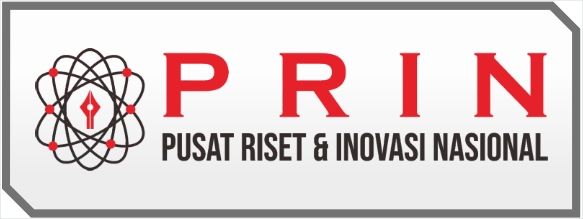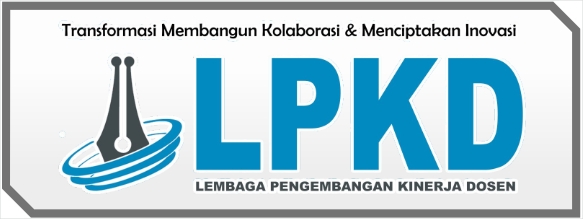Analysis Of MRI Knee Joint Examination In Meniscus Tear Case With STIR Sequence And T2 Medic Sagittal Cut At Radiology Installation Of Balimed Hospital Denpasar
DOI:
https://doi.org/10.55606/innovation.v2i1.2103Keywords:
Tear Meniscus, T2 MEDIC, STIR, MRI KneeAbstract
Knee injuries are often encountered in general practice and in hospitals. One injury that can occur is injury to the meniscus which causes a meniscus tear. The meniscus is a fibro cartilage disc which is the content of the knee joint and is divided into two, namely the lateral meniscus and the medial meniscus. To confirm the diagnosis of injured ligaments is by carrying out an MRI examination. MRI examination of the knee joint using T2* Multi Echo Rechalled Gradient Echo can provide optimal images in cases of meniscus tears. MRI examination of the knee joint using MEDIC is very useful for cervical imaging, cartilage, joint and musculoskeletal examination. The advantage of the MEDIC sequence is that it can be used for 2D and 3D imaging and can reduce chemical shift artifacts. Based on the journal taken by the author, the sequence needed to clinically show a meniscus tear on an MRI Knee Joint examination is sagittal STIR and sagittal T2 MEDIC. then the most optimal sequence in clinically showing a meniscus tear is chosen to increase the efficiency of the examination time. The type of research used is qualitative research with a case study approach. The subjects used in this research were 3 Radiology Specialist Doctors and 3 Radiographers. The STIR and T2 MEDIC sequences on the MRI Knee Joint examination have their respective roles in confirming the diagnosis of Tear Meniscus. The STIR sequence plays a role in assessing the Anterior Cruriated Ligament, Posterior Cruriated Ligament, radiologists also want to see edema or swelling that occurs in the patient's genu. The MEDIC T2 sequence plays a role in assessing the medial and lateral meniscus, the radiologist also wants to see blood production in the patient's genu. The STIR and T2 MEDIC sequences in the MRI Knee Joint examination at the Balimed Denpasar Hospital installation are able to confirm the diagnosis, especially in the clinical Tear Meniscus, because with these two sequences, the picture of the Medial Meniscus, Lateral Meniscus, Anterior Cruriated Ligament, Posterior Cruriated Ligament, product blood and edema can be clearly seen.
References
Astuti SD, Aisyiah N, Muzammil A. Analisis kualitas citra tumor otak dengan variasi flip angle (FA) menggunakan sequence T2 turbo spin echo axial pada magnetic resonance imaging (MRI). Pertem Ilm Tah Fis Medis dan Biofisika 2017. 2017;1(1):1689–99.
Nancy Major, Mark W. Anderson - Musculoskeletal MRI (2019, Elsevier) - libgen.li.pdf.
Long BW, Rollins JH, Smith BJ. Merril’s Atlas Of Radiographic Positioning & Procedures, Thirteenth Edition - Volume 3. Vol. 3, -. 2016. 443–444 p.
Singh A, Mangat I, Thukral CL, Gupta K. Diagnostic Accuracy of Ultrasonography in Evaluation of Knee Injuries with Magnetic Resonance Imaging Correlation. 2018;7(October 2016).
Abdullah RH, Khattab RT, Ahmed AR, Hatif RM. Role of Magnetic Resonance Imaging in Evaluation of Anterior Cruciate Ligament Injuries. Egypt J Hosp Med. 2017;69:2897–905.
Ikhwan Zein M. Cedera Anterior Cruciate Ligament (Acl) Pada Atlet Berusia Muda. Medikora. 2015;11(2):111–21.
Westbrook C. Handbook of MRI technique, 2nd edn. Vol. 10, European Radiology. 2014. 1827–1827 p.
Zhu S, Wang Z, He F. Clinical Significance of Combined Weight-Bearing and Non-Weight-Bearing Positions and MRI Examination in Evaluating Genu Varus. Orthop Surg. 2020;12(6):1718–25.
Schmid MR, Pfirrmann CWA, Koch P, Zanetti M, Kuehn B, Hodler J. Imaging of patellar cartilage with a 2D multiple-echo data image combination sequence. Am J Roentgenol. 2005;184(6):1744–8.
Chavhan GB. MRI Made Easy (for Beginners). 2016. 1–23 p.
Setiawan; VDADPSMANKYKAN. ANALISIS INFORMASI CITRA MRI KNEE JOINT PADA SEKUEN T2*MERGE DAN STIR IRISAN SAGITAL PADA KASUS MENISCUS TEAR DI RS PANTI RAPIH YOGJAKARTA. 2021; Available from: http://repository.poltekkes-smg.ac.id/index.php?p=show_detail&id=26485&keywords=
De Smet AA. How I diagnose meniscal tears on knee MRI. Am J Roentgenol. 2012;199(3):181–499.
Ahmed AF, Azeem AA, Eladawy A, Abdeen M. MRI as an accurate tool for the diagnosis and characterization of different knee joint meniscal injuries. Egypt J Radiol Nucl Med [Internet]. 2017;48(4):953–60. Available from: https://doi.org/10.1016/j.ejrnm.2017.06.013
Smet AA De, Graf BK, Rosas HG. Diagnosis and Classification of Meniscal Tears - MRI. Radiogr Univ Wisconsin Hosp Madison [Internet]. 2014;34(1). Available from: meniscus; knee; classification; meniscal tear
Gray S, Drake RL. ANATOMY.
Pearce EC. Anatomi Dan Fisiologi Untuk Paramedis [Internet]. PT Gramedia Pustaka Utama; 2016. Available from: https://books.google.co.id/books?id=55OShlTLNCMC
Bolog N, Andreisek G, Ulbrich E. MRI of the Knee. 2015.
Hansen JT. Netter’s clinical anatomy fourth edition. Journal of Chemical Information and Modeling. 2019. 1–630 p.
Siebold R. Anterior Cruciate Ligament Reconstruction.
Pratama AD. Intervensi Fisioterapi pada Kasus Osteoarthritis Genu di RSPAD Gatot Soebroto. J Sos Hum Terap. 2019;1(2):21–34.
Hashemi SA, Ranjbar MR, Tahami M, Shahriarirad R, Erfani A. Comparison of Accuracy in Expert Clinical Examination versus Magnetic Resonance Imaging and Arthroscopic Exam in Diagnosis of Meniscal Tear. Adv Orthop. 2020;2020:1–5.
Catherine, Talbot J. Mri in Practice Fifth Edition. Willey Blackwell. 2019. https://news.ge/anakliis-porti-aris-qveynis-momava.
Martin N, Malfair D, Zhao Y, Li D, Traboulsee A, Lang D, et al. Comparison of MERGE and axial T2-weighted fast spin-echo sequences for detection of multiple sclerosis lesions in the cervical spinal cord. Am J Roentgenol. 2012;199(1):157–62.
Elmaoğlu M, Çelik A. MRI handbook: MR physics, patient positioning, and protocols. MRI Handbook: MR Physics, Patient Positioning, and Protocols. 2012. p. 1–318.



















